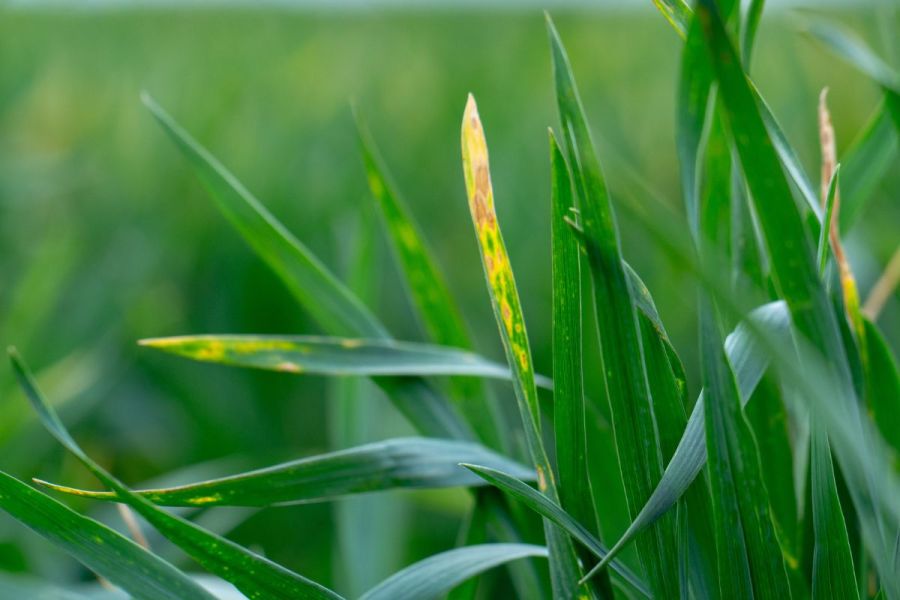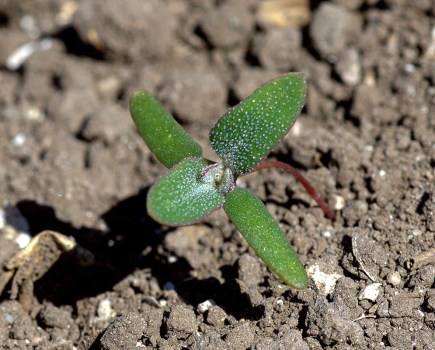With no letup in weather conditions, questions continue to be raised regarding balancing fungicide spend with crop yield potential. CPM spoke to four independent agronomists for their take on the situation.
“Be regimented with timings if conditions permit, there’s no margin for error.”
By Janine Adamson
If there was little inclination for how the season would pan out in the February issue of CPM, it appears to be no better a month later. For many, the rain and associated misery continues, but the key message from many agronomists is to not lose hope yet.
“We’re still speaking very academically as there’s not much that can be done practically at the moment,” says AICC member and Ceres Rural agronomist in the Shrewsbury region, Dan Matthews. “What we can say is it feels as though spring will be short; the long-range forecast suggests an unsettled March.”
Dan believes that where there is an opportunity to travel, for those with winter cereals in the ground, there’ll be much to address in a very short space of time. “In that window, growers will have to balance nutritional deficiencies, present disease pressure and weed management all at once. It won’t be easy.”
Agronomist Will Spurdens, also with Ceres Rural and the AICC, says the first port of call is to give crops some love and attention, and that fungicides should remain the final armour in a disease management programme. “Even with the huge spread of crops on the cards, all will require a level of nutrition. In some cases, it’s the more forward crops which will be hungry and require nitrogen quicker than a smaller, more backward crop. Equally, the role of trace elements shouldn’t be neglected,” he stresses.
Dan agrees that given the multitude of challenges this season, fungicides could be perceived as less of a priority. “Soil-based nutrition is very depleted this year so there’s likely to be a lot going on in tank mixes when there is an opportunity to travel. It might come seem obvious, but being organised will pay dividends.”
He says because some growers will have a greater area of spring crops to drill than usual, it could be tempting to let those take precedent over what’s already in the ground. “Margins should still be good for those winter crops even if they’re not at their best. Be regimented with the timings if conditions permit, there’s no margin for error.”
Across their region, both Dan and Will have noted some ‘strange things’ happening in crops due to the extreme conditions. “We’re seeing brown rust which is unexpected but will of course be a result of high stress plus the recent mild temperatures,” says Dan. “Equally, septoria pressure is high in forward crops depending on varietal resistance.”
Will echoes messaging from February CPM – strategic use of biostimulants and PGRs will help to divert energy into rooting to aid crop recovery, he says. “However, whether it’s fungicides etc or plant health products, calculating the appropriate spend based on yield potential and disease pressure will be imperative,” stresses Will.
Being pragmatic, Dan says in reality, there’s not that much between current fungicide product options as growers head into T1s. “In the West, the main problem is always septoria and when it comes to this disease, the available chemistry all offers adequate cover. I think it’ll likely be a commercial decision as to exactly what’s used,” he explains.
AICC member Scott Martin is part of Apex Agronomy and works from North Essex throughout Suffolk and into Norfolk. He says given the mild weather, he’s seeing the usual septoria pressure in winter wheat crops as well as yellow rust in susceptible varieties.
“For those going with a T0 due to the risk of yellow rust, usually in juvenile susceptible varieties which are showing pressure, we’re looking at tebuconazole in most cases.
“But it’s T1 where things get more interesting. Across my area we have two crops – those drilled before 10 October and then those which were planted at the end of December and into January. For the early crops, disease pressure appears quite high due to the weather and in this case, they’ll likely require a higher level of inputs.
“Without pricing to refer to at the moment, it’s difficult to predict a return on investment for the grower in those scenarios,” he says.
For the later drilled crops, Scott says septoria pressure will be lower and fungicide spend should reflect that, but focus should be on building biomass and canopy management. Higher than usual early nitrogen applications are to be expected, he comments.
But even if cereal crops aren’t looking amazing right now, Scott believes protecting their potential will be worthwhile. “It’s important to look after those early drilled cereals,” he says.
Up in the North, AICC member Ben Boothman advises on farms from Doncaster to Scotch Corner, as well as to the East Coast. He says for growers with added grassweed pressure to contend with, they’re still weighing up crop survival. “Being unable to get on with a pre- or post-em last year due to poor ground conditions has meant some crops are filthy with blackgrass.
“Equally we have septoria bubbling away in wheat, particularly in older, more susceptible varieties. As for barley, key diseases are evident such as rhynchosporium and the usual brown rust, mainly hosted by hybrid varieties, and crops are sat wet and yellow.”
For his region, he likens fungicide programmes to car insurance – from basic third party and theft through to fully comprehensive cover, all dependent on the status of the crop.
“Looking at T0s, in trials, varieties with good disease scores don’t see a financial benefit of an early application, which will be a bonus this year on crops with low potential. Being realistic, farmers are unlikely to want to spend much on those crops this year,” says Ben.
That said, growers who were able to drill early without severe grassweed pressure have good, thick crops, he adds. “They should be aiming for a more rounded programme to protect the yield potential and push them on.”
Ben says he’s hoping that the spring dries up a little so septoria pressure is minimal, but assessing the risk on a per-field basis should be the main goal. “Although balancing financial input on crop potential is important, I’d still advise using the best chemistry on those stronger crops if disease pressure is a concern but with the option to reduce the rates.
“This is because of the resistance issues with some of the older chemistry and the importance of getting the best out of those stronger crops. We can’t lose sight of longer-term goals such as resistance management and best practice,” he stresses.
In order to provide truly independent advice to his customers, Ben says he’ll wait until price lists are made available and then calculate an appropriate spend based on wheat prices and perceived crop potential. “The good crops certainly still require spraying but variety and disease pressure as always has a big impact on the chosen chemistry.
“Equally it’d be quite naïve to think that poorer crops shouldn’t be treated at all, that seems like an unwise perspective to me,” he states.
His parting comment is to not underestimate the importance of timing. “Opportunities to travel will be infrequent if the weather pattern continues, so if you are reducing the rates, hitting exactly the right point in the crop’s development will be crucial.
“Good timing means you have the capacity to adjust what’s in the tank, but of course, it’s all weather dependent,” he concludes.
This article was taken from the latest issue of CPM. Read the article in full here.
For more articles like this, subscribe here.
Sign up for Crop Production Magazine’s FREE e-newsletter here.




